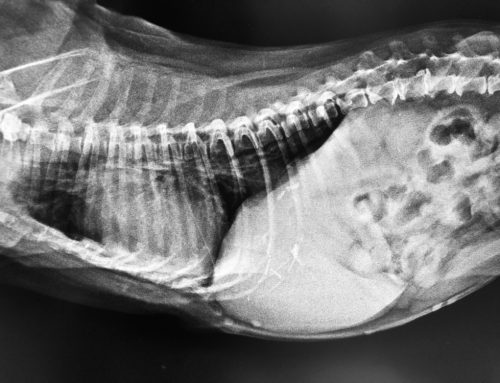With pets living longer than ever, they are experiencing an increased cancer risk in their golden years. Fortunately, the advancements in veterinary medicine that allow pets to live longer come with cancer diagnosis and treatment innovations. Cancer is more common in older dogs and cats, but pets of any age can develop cancer, so monitoring your pet for cancer warning signs is vital. Making a diagnosis and starting treatment early gives your pet the best possible prognosis.
Common cancer warning signs in pets
Being informed about—and on the lookout for—potential cancer signs will afford your furry pal the best chance at beating this disease. Common cancer warning signs in pets include:
- Unexplained lumps or bumps
- Unexpected weight changes
- Difficulty urinating or defecating
- Problems chewing and swallowing
- Limping or pain
- Foul odor
- Discharge or bleeding
- Non-healing sores
- Swollen lymph nodes
- Difficulty breathing
- Sudden weakness or collapse
- Lethargy
How cancer is diagnosed in pets
Since your pet with cancer may show only vague illness signs, a definitive diagnosis is necessary before treatment can begin. Your furry pal will undergo a variety of tests that will provide an accurate diagnosis, and help determine the stage, or severity, of their cancer. Common tests used to diagnose cancer in pets include:
- Physical examination — We will start with a comprehensive physical examination to check for many cancer warning signs, such as lumps and bumps, non-healing sores, unexplained weight changes, foul odors, or discharge. These clues will guide our next steps.
- Blood tests — Blood work allows us to examine your pet’s internal health and organ function. With the two most widely used blood tests—a complete blood count (CBC) and blood chemistry profile—we will measure your pet’s blood cell counts, organ function, and electrolyte levels. Abnormalities in these results can help pinpoint which body system is affected.
- X-rays — A digital X-ray or a series of X-rays may show a tumor in an unexpected place in the chest or abdomen, or the mottled appearance of osteosarcoma-affected bone.
- Ultrasound — Ultrasound provides a more detailed look at a potential disease and can clarify unclear X-ray images. Our team also uses ultrasound to guide them when obtaining samples of suspicious areas.
- Fine needle aspirate — We may take a sample of cells from a lymph node or tumor using a needle and syringe and evaluate the cells microscopically for malignancy.
- Biopsy — A definitive diagnosis sometimes requires a tissue sample, and we will surgically remove some, or all, of the suspicious tissue for examination by a histopathologist.
How cancer is treated in pets

Several cancer treatments are available for pets, and the decision will be based on your pet’s overall health, age, and cancer type and stage. Some cancers respond well to a single therapy, while others require more aggressive treatment. Cancer treatments for pets include:
- Surgery — Surgical removal of a cancerous tumor is the simplest treatment, and works well if the mass is small, well-defined, and easy to reach, but is not the best option for a tumor that is large, has finger-like projections, or is in a difficult to remove location. Surgery can also be performed initially to debulk a tumor, which gives radiation a better chance at eliminating cancer cells.
- Radiation — Radiation therapy is used to damage the cancer cells’ DNA, to make it difficult for the cells to multiply and thrive. Typically, radiation therapy is used after surgery, or in conjunction with chemotherapy or immunotherapy. Radiation therapy can also be used to ease the pain of certain cancers, such as osteosarcoma.
- Chemotherapy — Chemotherapy uses drugs to kill or slow cancer cell growth, and is used most often for cancer that has already metastasized, tumors in more than one location, or large tumors that cannot be removed surgically. Chemotherapy is typically administered via oral or intravenous routes, and is generally much better tolerated by pets than people.
- Immunotherapy — Immunotherapy centers on boosting your pet’s immune system to help fight off cancer cells. The main types of immunotherapy available for pets include monoclonal antibodies and cancer vaccines, such as the melanoma vaccine. These therapies typically work best combined with other treatment methods.
Our Billings Animal Family Hospital team understands that a potential cancer sign in your pet is extremely concerning. If you notice any abnormality in your pet, contact us to schedule an appointment as soon as possible.








Leave A Comment